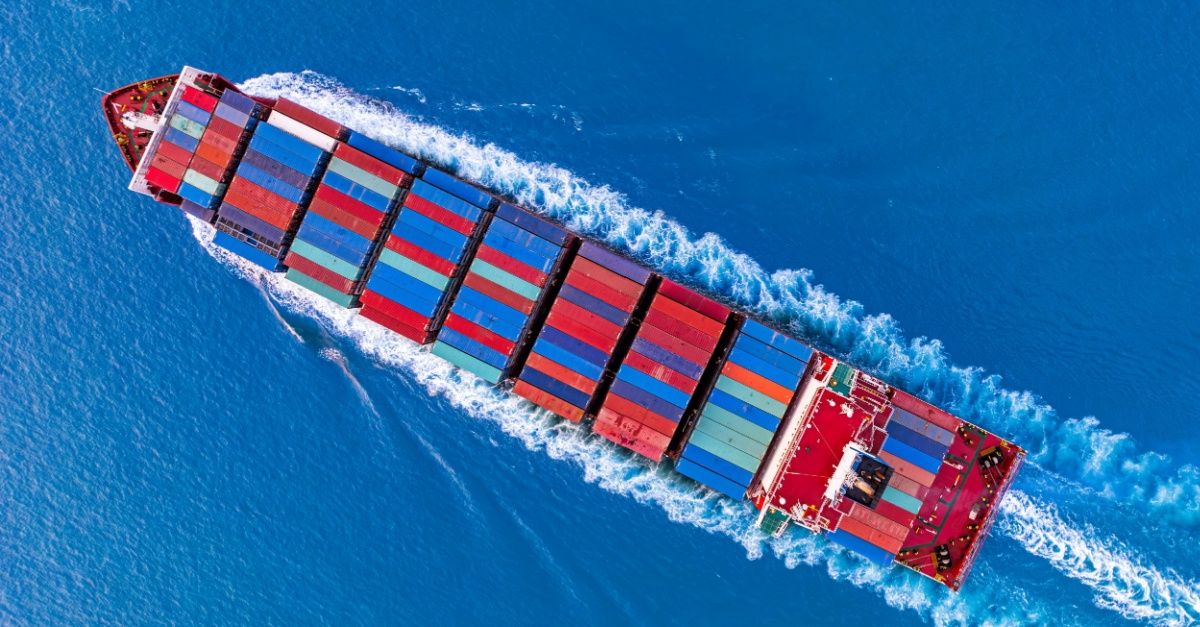
How the Maritime Industry Can Deliver on Net Zero 2050 Promises
The maritime industry — responsible for nearly 3% of global greenhouse gas (GHG) emissions — faces a significant decarbonization challenge. Despite its reputation as one of the most efficient forms of freight transportation, international shipping’s sheer scale means its climate impact is substantial.
The industry’s collective commitment to achieving net-zero emissions by 2050 represents a bold and necessary step. However, reaching this goal requires urgent action across fuel production, regulatory frameworks, ship design, and emissions tracking.
One of the clearest road maps for delivering on this promise comes from the World Shipping Council’s (WSC) Green Balance Mechanism, a multipronged approach designed to drive the type of transformation needed. Here’s how the maritime industry is moving toward net zero by 2050, and how data solutions like those from Searoutes can help make it happen.
Accelerating Green Fuel Production and Adoption
Achieving net zero hinges on replacing fossil fuels with zero-carbon alternatives like green ammonia, hydrogen, and methanol. However, the maritime sector currently faces a major hurdle: the availability of these fuels at scale. In 2023, biofuels accounted for only 0.3% of marine energy use.
Infrastructure limitations, high production costs, and a lack of distribution networks are among the economic and logistical barriers to adoption. Recognizing this, the WSC has proposed a Green Balance Mechanism to bridge the cost gap between conventional and green fuels. By offering subsidies or incentives tied to emissions performance, the model aims to reward early adopters and stimulate demand. This will ultimately drive investment in fuel production and bunkering capacity.
Strengthening Regulatory Frameworks and Market Incentives
Regulation is essential to ensure the industry remains on course toward supply chain emissions goals. In 2023, the International Maritime Organization (IMO) adopted an enhanced GHG strategy, aligning the industry with the Paris Agreement and setting interim targets for 2030 and 2040. This regulatory clarity is crucial for guiding long-term investment decisions, especially for shipowners evaluating new builds or retrofits.
In tandem, market-based mechanisms like the EU Emissions Trading System (ETS) and the proposed IMO carbon levy are poised to reshape the economics of ocean freight. These tools create price signals that make low-carbon options more competitive, accelerating the transition from fossil fuels and spurring innovation across the industry.
Ship Design and Technological Innovations
The ships of 2050 will look dramatically different from those of today. Already, new designs are emerging that can accommodate multiple fuel types, ensuring flexibility in an evolving energy landscape. Beyond alternative fuels, technological advancements are improving energy efficiency onboard.
Solutions like wind-assisted propulsion, air lubrication systems, and advanced hull coatings are reducing drag and lowering fuel consumption. At the same time, retrofitting existing vessels is essential to achieving immediate emissions reductions. These upgrades, often more cost-effective than new builds, can include engine modifications, propeller upgrades, and integration of hybrid power systems.
Emissions Tracking and Data Standardization
None of these changes can succeed without precise, standardized emissions tracking. As regulations like the IMO Data Collection System (DCS) and the EU Monitoring, Reporting and Verification (MRV) take effect, ship operators need reliable tools to measure performance.
Standardized data ensures that emissions reductions are both verifiable and comparable, which is key to compliance and to building trust with stakeholders and regulators. It also empowers operators to make data-driven decisions, optimizing routes, speeds, and fuel choices in real time.
Turning Promises into Progress
Reaching net zero by 2050 is a monumental task for the maritime industry. It requires nothing short of a complete transformation: new fuels, ships, incentives, and ways to track progress. The WSC’s Green Balance Mechanism provides a practical, scalable path forward, but its success depends on the collective action of regulators, shipowners, energy producers, and data partners.
Searoutes is proud to be part of that solution. By equipping the industry with accurate, actionable data, we help accelerate compliance, reduce operational emissions. This helps ensure that the shipping industry’s net-zero promises are not only credible but achievable.
Searoutes empowers shippers with the data they need to thrive in uncertainty, offering emissions transparency, route optimisation, and real-time CO2 tracking to support smarter decisions and sustainable growth.
How Searoutes Helps Ocean Shipping Meet Its Goals
This is where Searoutes plays a transformative role. As a leader in maritime data analytics, Searoutes provides powerful tools to help shipping lines, freight forwarders, and shippers track and reduce their emissions with confidence.
For example, a global logistics provider working with Searoutes was able to identify a 12% emissions reduction opportunity on a high-volume transatlantic lane by adjusting route selection and vessel pairing based on real-time analytics. This kind of optimization reduces carbon footprints while delivering cost savings and regulatory advantages.Each of our products — CO2 API, Routing API, and Vessel API — can help you find additional ways to reduce GHG emissions, by finding a greener route or avoiding choke points that cause delays and waste fuel. Get started today with Searoutes and take control of your emissions and stay competitive in a changing world.
carbon accounting, carbon accounting methods, decarbonization, Scope 3 emissions reduction